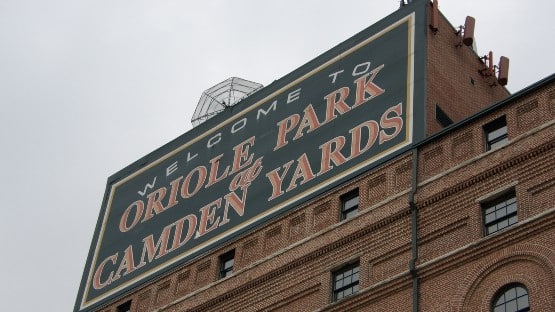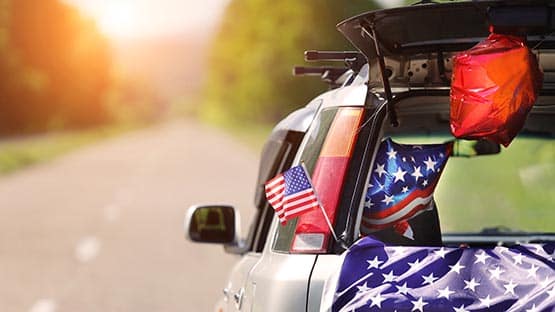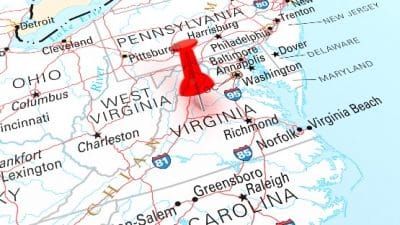
Attending a game at Camden Yards is like attending a country music festival with occasional bouts of baseball in between.
That’s one thing that stood out to me last weekend – a fun weekend for me and the missus on Eutaw Street, despite the good guys losing two out of three, and scoring exactly three runs in the three games.
Another thing that stood out: 90 percent of the people working in the stadium are Black.
I noticed this most prominently when I ventured out from the hotel across the street on Saturday morning for my morning run.
I like to run when I go to big cities to get a feel for the surroundings.
I made my Saturday run a loop of Camden Yards – actually six loops, to get to 3.6 miles.
Running around and around and around the park hours before game time, I was there when folks were showing up for work.
I might be underestimating it to say that 90 percent of the stadium employees are Black.
I only remember literally a couple of White faces.
I was thinking about that between innings when the country songs were blaring over the sound system, and during the seventh-inning stretch, which features a crowd-participation rendition of John Denver’s “Thank God, I’m a Country Boy.”
Now, I’m from the actual country – my hometown, such as it is a town, is a collection of trailer parks around a tiny elementary school built in 1927 that has been closed for 35 years.
I like country music. OK, I didn’t growing up, but I do now, if you count country pop and country hip hop as country, which most people my age who like country music don’t.
I was on the field for the DJ set featuring Shaquille O’Neal after the game on Friday night. That’s more my style.
There weren’t as many people there for that as I’d expected.
Decent crowd in the infield, a few full sections in the stands.
The crowds for the three games, I started to notice, when I started to pay attention, were rather White.
I made a mental note when we left for home on Sunday to look up how many of the players are Black.
This came to mind because I’m reading a recent John Feinstein book, Raise a Fist, Take a Knee: Race and the Illusion of Progress in Modern Sports, in which, among other things, America’s Quintessential Sportswriter makes the point that baseball, 76 years since Jackie Robinson broke the color barrier, still has a race problem.
According to data from MLB, Black players make up just 6.2 percent of the players at the Major League level.
For comparison, U.S. Census data has it that 13.6 percent of the U.S. population is Black.
Looking over the O’s roster, I count two players – Aaron Hicks and Cedric Mullins – who are African-Americans.
Another four – shortstop Jorge Mateo and relief pitchers Felix Bautista, Eduard Bazardo and Yennier Cano – are Latinos who have dark enough skin that they wouldn’t have been allowed to play in MLB before 1947.
That’s a helluva standard to have to have, isn’t it?
‘Murica.
The two African-American players on the O’s roster is average across MLB – the data tells us there are 59 African-American players in the Majors right now, roughly two per team.
Overall, the player population is 40.3 percent “diverse” – African-American, Latino, Asian, Pacific Islander, Hawaiian and Native American.
I provide that greater context to make the point that, I’m not picking on Baltimore here.
I’m also a Washington Nationals fan, and make it to Nats Park a few times a summer, and the situation there is somewhat similar in terms of the fans being largely White, the roster being largely White (the four African-American players on the Nats roster doubles the MLB average), the stadium employees being almost all-Black.
The music there doesn’t trend toward Nashville, so there’s that.
The mascots, the Nationals Racing Presidents, include two for guys who were slaveowners (George Washington, Thomas Jefferson), but there is also one for the guy who wrote the Emancipation Proclamation (Abraham Lincoln), so, some balance there, maybe.
I guess what I’m getting at is, it seems to me that baseball has a business problem, and I only noticed that because of the music at Camden Yards.
I get it, that if the people who come to your games are largely White people, you play to what they want.
If having the Oriole Bird leading the crowd in “Thank God, I’m a Country Boy” during the seventh-inning stretch makes the bulk of the fans happy, you do what you can do to make the bulk of the fans happy.
Poring through the Census numbers, the City of Baltimore is 61.6 percent Black, and the Baltimore Metro area is 28 percent Black.
The paucity of Black faces that I saw in the stands and on the concourses this past weekend tells me that there are people who could be buying tickets and aren’t, for some reason.
It may be that there aren’t a lot of Black players on the field.
Two per team, on average.
It may be that the gameday environment doesn’t seem all that inviting.
It may be a combination of those things, and others that I’m not hitting on here.
I will say that it all feels to me like how things probably were during segregation – Black folks serving food and drinks to White folks out having a good time.
Seems to me that there’s work to be done here.










